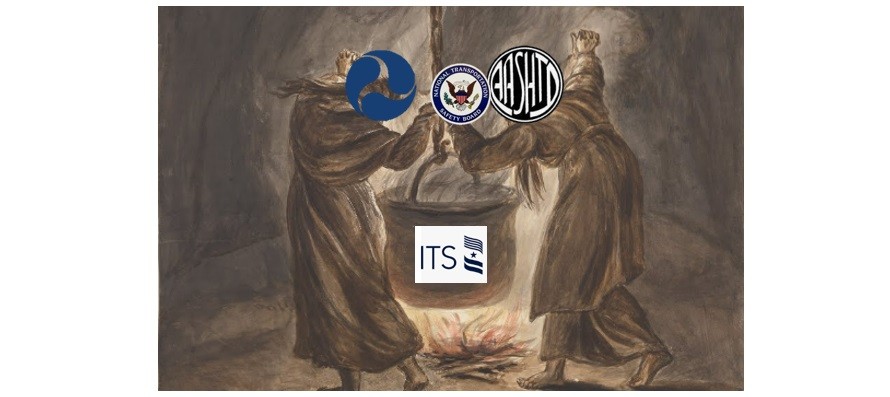
Last year, the U.S. Federal Communications Commission sought to resolve the lingering dispute over the use of 75MHs of Wi-Fi spectrum in the 5.9MHz range, previously allocated to the automotive industry for safety applications, by designating 45MHz of that spectrum for unlicensed use while preserving 30MHz for automotive safety. The move opened the door to cellular-based C-V2X deployments – kicking aside the DSRC (dedicated short rage communications) technology favored by many auto makers.
ITS America and the American Association of State Highway and Transportation Officials (AASHTO) filed suit to block the action in court. Last week the court ruled in favor of the FCC.
Prior to that ruling, three auto makers (Jaguar Land Rover, Audi of America, and Ford Motor Company), nine hardware manufacturers (of roadside and in-vehicle devices), along with several state transportation authorities sought waivers from the FCC to proceed to deploy C-V2X technology and/or to replace older so-called DSRC V2X technology. Weeks ago, comments supporting the waiver requests poured in and action is expected within weeks.
Several dozen entities filed comments with the FCC on C-V2X waiver filings, overwhelmingly supporting immediate deployments of C-V2X in the 5905-5925 MHz band. Opposition from pro-DSRC parties was muted. California, Colorado, South Dakota, Wyoming, Tampa, FL, Atlanta & Alpharetta, GA, DOTs all asked the FCC to expeditiously approve the waiver requests.
Notably, ITS America and AASHTO – the groups that challenged the FCC decision allocating 45 MHz of the ITS band to unlicensed use and the remaining 30 MHz to C-V2X – filed comments strongly supporting the waivers.
The judge’s ruling against ITS America and AASHTO and in favor of the FCC, ought to be the last word. But perhaps not.
The battle continues over V2X technology, which began with an FCC allocation of 75MHz of spectrum in 1999 for DSRC. In a recent Automotive News “Shift” podcast, manager of vehicle technology at Consumer Reports Kelly Funkhouser spoke out in favor of DSRC as a technology that could dramatically reduce vehicle collisions and the related fatalities. Funkhouser displayed a frightening lack of awareness of C-V2X tech and an unfortunate partiality to older, now defunct DSRC tech.
Similarly, a podcast produced by the Alliance for Automotive Innovation – which included participants from the U.S. DOT, and the National Transportation Safety Board (NTSB), appeared to be promoting DSRC technology as a technology that could eliminate 90% of highway crashes and related fatalities. The NTSB representative, in particular, advocated DSRC – the older technology that will be compromised by the FCC re-allocation.
The AAI podcast was especially disturbing for its emphasis on the risk of signal interference within the more limited 30MHz of allocated spectrum and the unlicensed use of the nearby 45MHz. This concern verged on disinformation in association with C-V2X technology.
The comments on the AAI podcast were reminiscent of similar skepticism and resistance toward C-V2X technology expressed at the ITS America summit in Charlotte, N.C., last November. During a panel discussion at the event a U.S. DOT executive did his best to raise questions regarding the efficacy of C-V2X.
The AAI has a 10-point plan for the promotion and adoption of V2X technology, notably not distinguishing C-V2X and still appearing to put a thumb on the scale in favor of DSRC. You can judge for yourself here: https://www.autosinnovate.org/about/advocacy/V2X%20Policy%20Agenda.pdf
The sad reality vis-à-vis the AAI is that the Infrastructure Bill already passed through Congress is filled with a wide array of funding and initiatives to promote the adoption of C-V2X technology specifically – again, reflecting the reality that DSRC is a dead letter.
With waivers expected to be granted and the recent judicial victory for the FCC, the path is finally clear in the U.S. for widespread C-V2X adoption and deployment. In this context, it is time for the DSRC crowd to dismount from the barricades and accept reality and, really, fundamentally, stop standing in the path of progress.
Also read:
Automotive semiconductor shortage over?
Auto Makers Face Existential Crisis
Share this post via:







Quantum Computing Technologies and Challenges